Affiliated Research Labs

Cultural Heritage Laboratory
Lab PI: Jon Daehnke (Anthropology)
The Cultural Heritage laboratory was established to help facilitate and promote projects that revolve around the preservation and stewardship of cultural heritage, with a special focus on community-based collaborative work. The goal of the Cultural Heritage laboratory is to provide a center for hands-on training in all aspects of heritage stewardship, from initial background research and the development of collaborative partnerships, to the completion of research reports and public/educational materials.
Laboratory participants have access to field equipment and computer resources that will assist them in their stewardship work, including equipment for the recording and documentation of ethnographic interviews and oral histories (digital voice recorders and video cameras), archaeological survey and mapping (Trimble handheld units and base station, GIS workstation), and the production of public documents and interpretive material (desk-top publishing, website development, video editing).

Digital Archaeologies Laboratory
Lab PI: Carla Hernández Garavito (Anthropology)
The Digital Archaeologies Laboratory (currently under construction) aims to be an interdisciplinary and collaborative space to explore the potential of digital technologies for anthropological research.
Conceived as a research and teaching space, the goal of the DAL is to become an experimentation space that supports creative research, with a particular focus on digital methods in heritage conservation, storytelling, and public outreach.
The DAL will be outfitted with high-end computers, different hardware (digital cameras, drones, microscopes, VR headsets), and software. The needs of scholars working in the lab will determine its continued growth.
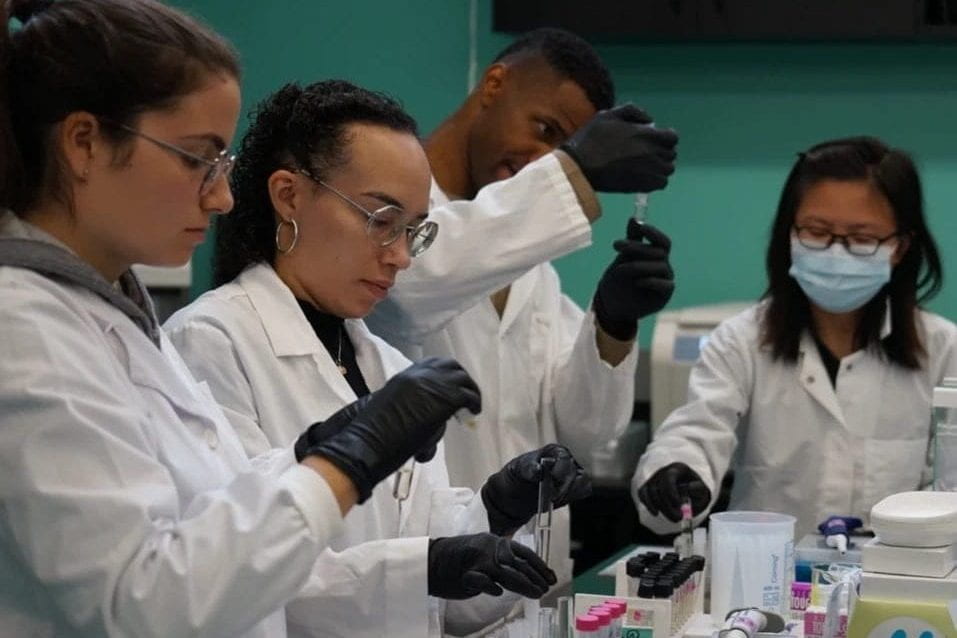
Primate Ecology and Molecular Anthropology Lab
Lab PI: Vicky Oelze (Anthropology)
The research focus of this lab is twofold: First, the ecology of African great apes and their habitats; second, the subsistence strategies and movements of prehistoric human populations. The lab primarily uses minimal or non-invasive molecular tools to reconstruct diets and mobility in these human and non-human primates. Direct observations and remote sensing are also used to study primate behavior in the wild, along with tree climbing for arboreal sample collection. The lab is primarily set up for sample processing and preparation for isotope analyses, but also has space for other wet-chemical applications and microscopy.
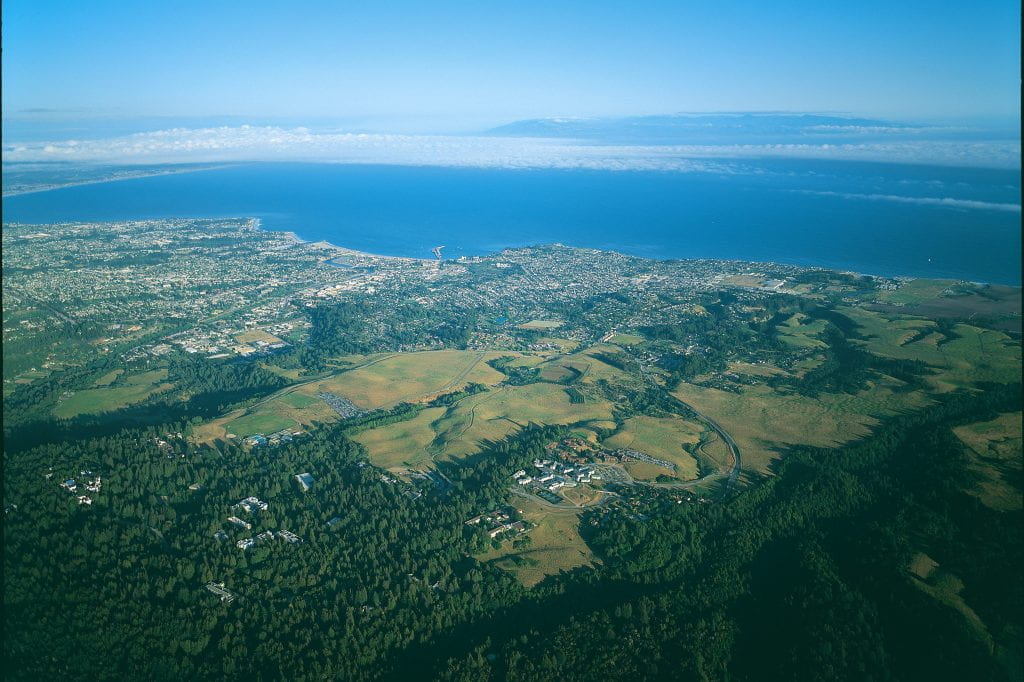
Monterey Bay Archaeology Archives
Director: Jon Daehnke (Anthropology)
The Monterey Bay Archaeology Archives is a UC Office of the President recognized non-profit repository for archaeological materials from the greater Monterey Bay region. The collections are overseen by Professor Diane Gifford-Gonzalez and lab manager Richard Baldwin.
The MBAA houses cultural materials from 12 prehistoric and historic sites in Santa Cruz County and over 60 prehistoric and historic sites in northern Monterey County. In addition to the actual archaeological materials, site excavation records, reports, and other documentary materials relevant to the sites are curated in perpetuity in the Archives. Most of the sites curated in the UCSC Archaeology Archives are from a region occupied by peoples of the Ohlone (also known as Costanoan) cultural group at the time of the first Spanish entry into the area. Sites from the Landels-Hill Big Creek Reserve are from lands attributed to Esselen or Salinan peoples at the time of Spanish contact.
Other, historic archaeological materials derive from UCSC’s own Cowell Limeworks Historic District. The collections are available to research scholars from other institutions whose projects contribute to local prehistory, and to undergraduate and graduate students from the University of California. An average of three scholars a year wish to come in and work with the collections or to check out specimens for laboratory analysis. Each request for access to the materials is screened by the curatorial staff for its appropriateness relative to standards of the Society of California Archaeology and Native American communities.
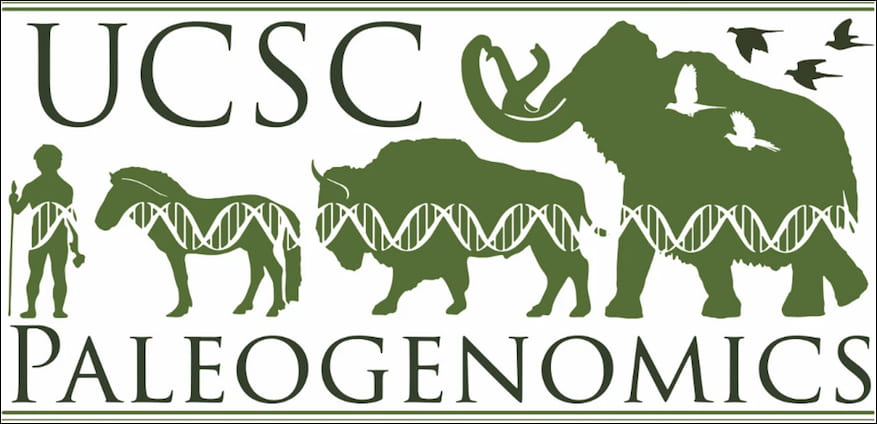
Paleogenomics Laboratory
Lab PIs: Beth Shapiro (Ecology & Evolutionary Biology), Ed Green (Biomolecular Engineering), Lars Fehren-Schmitz (Anthropology)
The Paleogenomics Lab is a joint venture between three PIs: Beth Shapiro, Richard (Ed) Green and Lars Fehren-Schmitz. Their research focuses on a wide range of evolutionary and ecological questions, mostly involving the application of genomics techniques to better understand how species and populations evolve through time. Their groups incorporate experimental and computational approaches. They generate new data and devise new approaches to their analysis, such as tools to assemble genomes and to analyze genomic and population genetic data.
Lab participant interests are broad, spanning human evolution, genome assembly and analysis, pathogen evolution, population genetics and the genomic consequences of long-term environmental change. To address these questions, we use experimental and computational technique such as DNA extraction, amplification and sequencing (including next-gen approaches), Phylogenetic and population genetic analysis, bioinformatic approaches to whole-genome analysis and multi-proxy (isotope, DNA diversity, paleobotanical records) paleoenvironmental reconstruction.
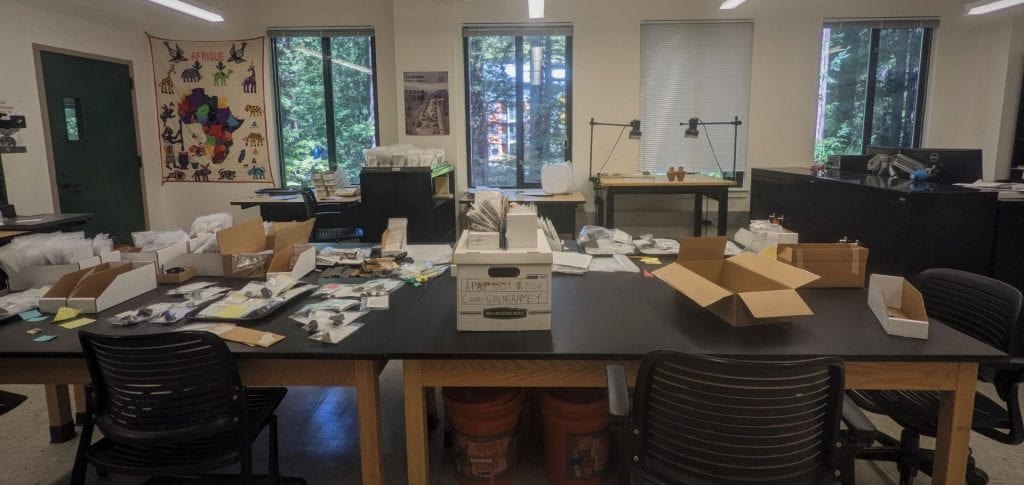
Spatial Archaeology Laboratory
Lab PI: J. Cameron Monroe (Anthropology)
Quantitative approaches to the analysis of spatial patterning have re-emerged in recent years as integral components of a wide range of modes of anthropological inquiry. The Spatial Analysis Laboratory provides state of the art research facilities for exploring spatial patterns across cultural landscapes at multiple scales of analysis. The facility boasts advanced laboratory and field research equipment, including six GIS workstations and peripherals, as well as a full complement of spatial technologies used in field survey (total station, Trimble GPS base station, and Trimble GPS handheld field computers), as well as 3D scanning for digital artifact analysis.
Laboratory associates are engaged in a variety of projects designed to collect, analyze, and interpret spatial data from a broad range of cultural landscapes past and present. Past and current research projects undertaken by lab associates have examined urbanism and regional settlement practices in precolonial West Africa, ceramic production and exchange networks in precolonial West Africa, the nature of settlement defense and agricultural planning in Contact Era New Mexico, and economic networks linking precontact settlements in coastal California.

Stable Isotope Laboratory
(Earth and Planetary Sciences)
The University of California Santa Cruz Stable Isotope Laboratory (SIL) was established in 1994 with two Fisons Dual-Inlet isotope ratio mass spectrometers (the Optima and Prism III) equipped with automated common acid bath carbonate devices.
This lab has been under the direction of PI’s Christina Ravelo and Jim Zachos since its inception. In 1996, Paul Koch added a continuous flow Elemental Analyzer system to the Opitma and assumed a co-director role. To date, these instruments have generated over 95,000 analyses. In January of 2006 three new Thermo-Finnigan Delta+XP continuous flow mass spectrometer systems were installed in the SIL.
This facility was funded by a Major Research Instrumentation (MRI) grant involving the National Science Foundation, the UCSC Physical and Biological Sciences Division, and the UCSC Vice Chancellor of Research. This new facility offers greatly expanded research capabilities to scientists at research institutions that rim the Monterey Bay Crescent. UCSC faculty Christina Ravelo, Raphe Kudela and Matt McCarthy (Ocean Sciences), and Paul Koch (Earth and Planetary Sciences) are the primary directors of this new facility.
In October of 2009, our trusty Optima was retired from service to make room for a new instrument. In November 2009, a ThermoFisher MAT253 isotope ratio mass spectrometer, coupled to a Kiel IV automated carbonate device was installed and shortly thereafter brought into regular service.

Ecological Legacies in Archaeology (ELLA) Lab
PI: Eréndira Quintana Morales (Anthropology)
The ELLA (pronounced EH-yah) Lab provides a collaborative space to learn about long-term interactions between living organisms, including humans, and their environments. A major goal of the research in the ELLA lab is to work with local partners and apply archaeology to address current climate and environmental issues. Ongoing research in the lab focuses on the social and ecological impacts of past fisheries along the coasts of eastern Africa and southwestern Madagascar, and the Kafue River Floodplains in Zambia. Members of the ELLA Lab learn zooarchaeological analysis of fish remains and participate in outreach activities throughout the year. Contact Eréndira if you’d like to learn more about our work.
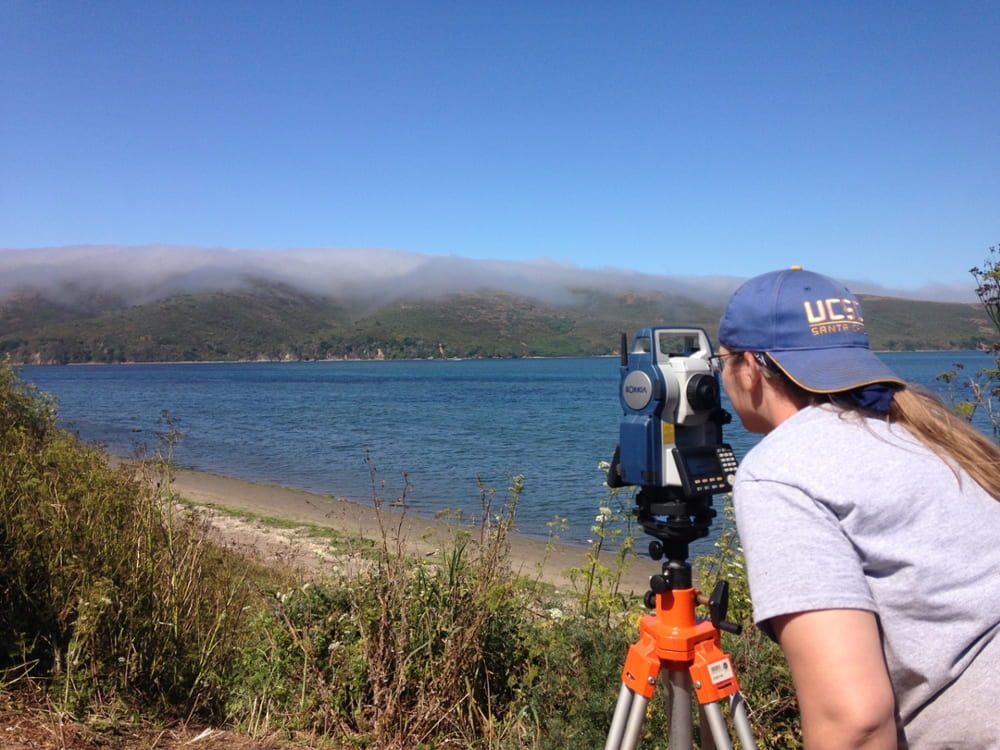
Laboratory for the Study of California Pasts
Lab PI: Tsim Schneider (Anthropology)
The Laboratory for the Study of California Pasts (“California Pasts Lab”) at UC Santa Cruz facilitates student and faculty research investigating the prehistory and history of California, with special emphasis on collaborative and community-based scholarship addressing Indigenous-colonial encounters in Central California. Current research associated with the California Pasts Lab includes the study of San Francisco Bay shellmounds, an archaeological and historical study of Indigenous laborers at a mid-century trading post at Tomales Bay and the re-analysis of archaeological materials previously collected from Mission Santa Cruz.
In addition to possessing standard laboratory equipment (microscope, balances, and small tools) used for processing and temporarily housing archaeological materials typically found in California archaeology sites (i.e. bone, shell, and stone artifacts as well as metal, glass, and ceramic materials introduced to California more recently), lab affiliates have access to field equipment, computer resources, photography gear, and a “California and Great Basin Olivella Shell Bead Typology” kit and guide. Specialized instrumentation includes a Bruker Tracer III-SD pXRF and the lab shares a GSSI SIR-3000 ground penetrating radar with the Spatial Archaeology Laboratory.
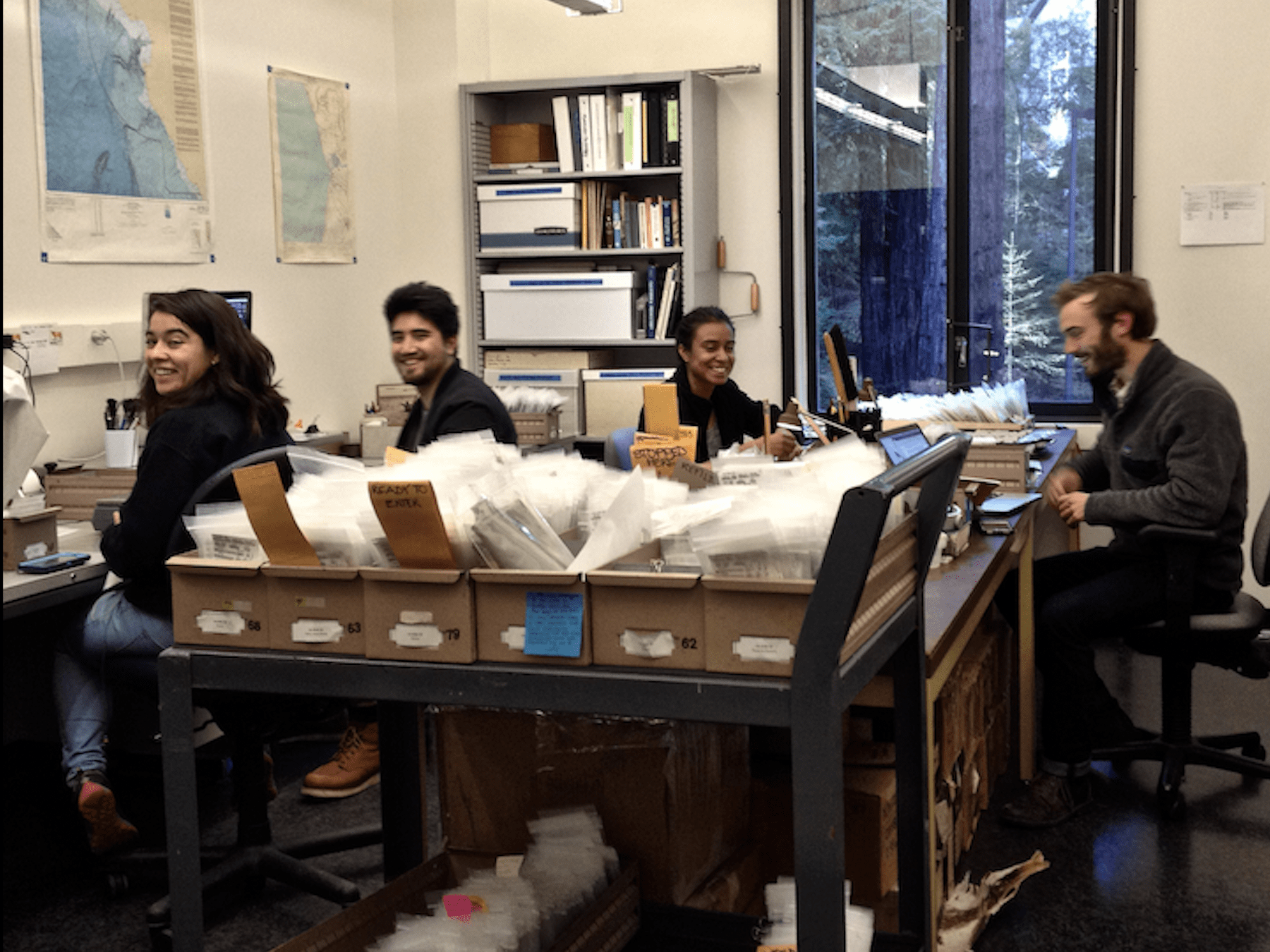
Mammal and Bird Historical Ecology Laboratory
Lab PI: Diane Gifford-Gonzalez (Anthropology, Emerita)
The Lab supports faculty and graduate student research projects and training in using faunal materials to explore human – animal interactions in central coastal California and East Africa. Former, now-published projects include: local Indigenous landscape maintenance practices using fire, historical ecology of northern fur seals in the greater Monterey Bay, isotopic ecology and mobility practices of early African pastoralists in Kenya, and parameters of bone grease extraction.
Undergraduates wishing hands-on experience with bird and mammal bones may do 2-unit internship under PI supervision are welcome to sign up for Anth 197F (2 units). Graduate students working with current faculty on the geographic areas of research described above and wishing hands-on zooarchaeological experience are welcome to discuss lab apprenticeship (Anth 297) with the PI.
Please note that COVID masking and other protocols is required in this lab, limiting the number of students that can occupy the room together.